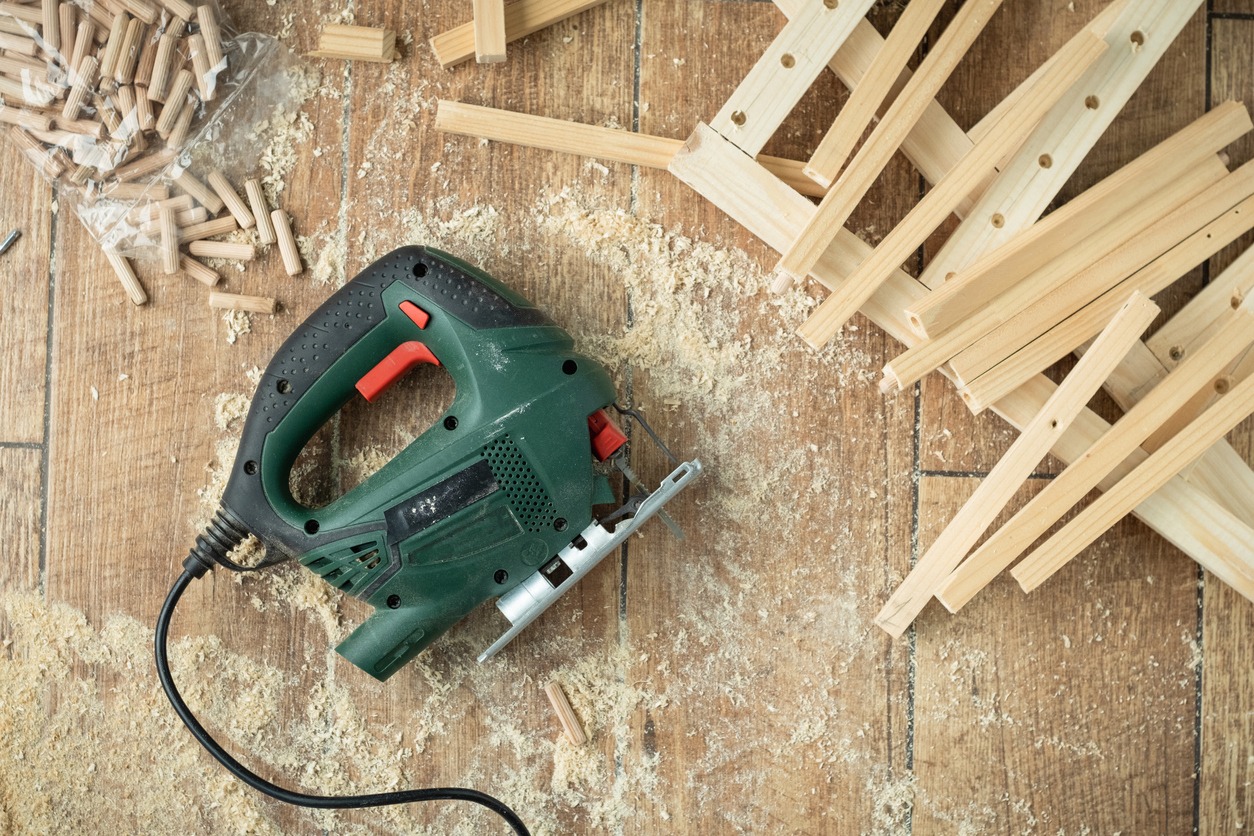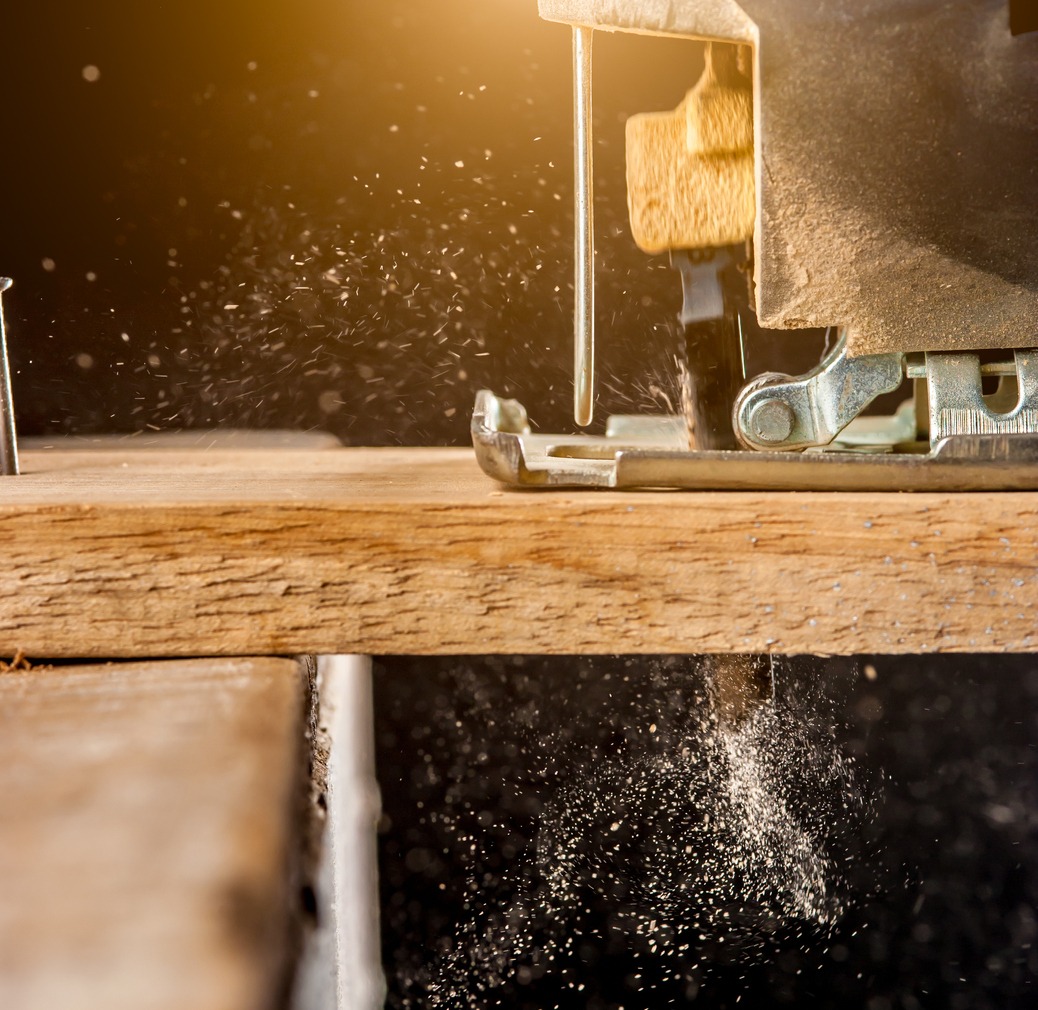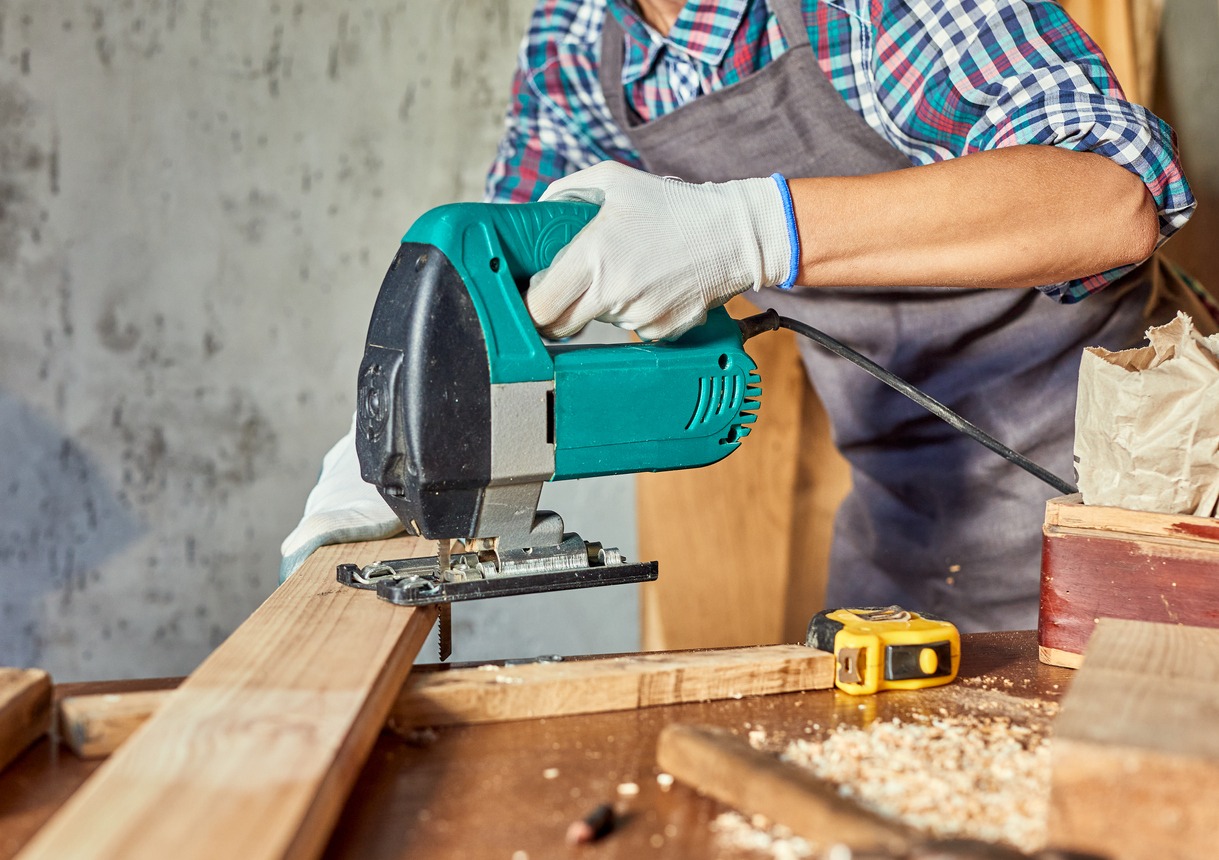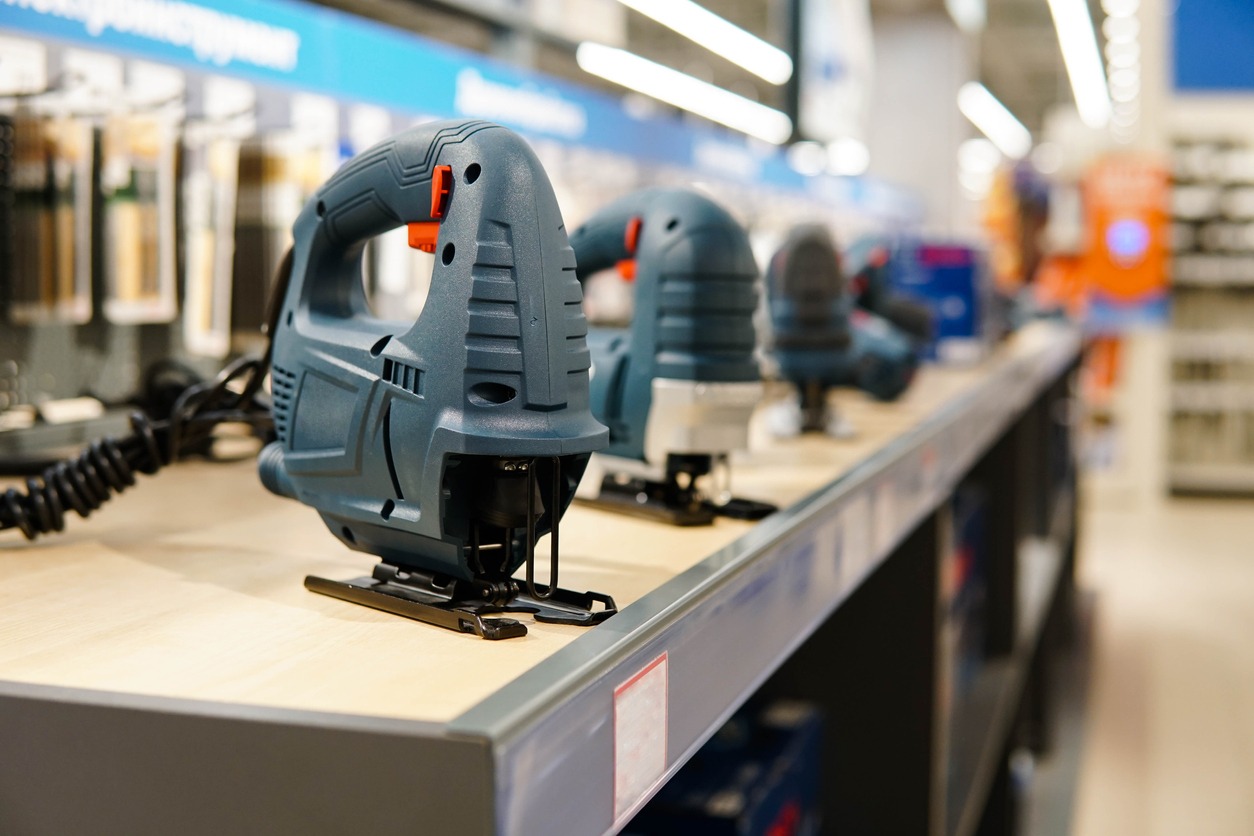A jigsaw is an essential tool for every seasoned DIY handyman. It is usually the first tool that enthusiasts purchase for their woodworking tool collection. When it comes to cutting materials, a jigsaw is second to none. It can cut a material into several different shapes and sizes. Plus, it also excels itself at making clean straight and bevel cuts.
Its versatility is what makes the jigsaw a much-sought after power tool by both the hobbyists and professionals. In this guide, you will find everything you need to know about this gem of a tool.
What is a Jigsaw?
A jigsaw is a versatile, yet delicate power saw. It is a handheld device that features a thin blade. In addition to the blade, the machine consists of a handle and a motor.
When powered up, the straight, vertical blade makes reciprocating movements. As the blade moves up and down, you move the saw through the material that you want to cut. Primarily used for cutting wood, a jigsaw is also effective at cutting other materials such as metal, plastic, and ceramic.
A good thing about this power tool is that it works with a variety of blades. This compatibility with a vast selection of blades is another reason for a jigsaw’s versatility. With the right blade, you can use a jigsaw to create curves, holes, and intricate cuts on the material you are working with. It is a must-have tool for making furniture, renovating around the house, as well as for creating artworks.
Different Types of Jigsaw
Jigsaws are categorized into different types according to how they are powered and the way their reciprocating blade moves. Here is a brief account of some types of jigsaws currently available on the market:
1. Corded Jigsaw
Corded jigsaws are usually purchased for commercial and heavy-duty usage. These have an electrical wire that you plug into an outlet for power. Corded jigsaws are robust and continue to work for a long duration. Once you have one plugged in, you can continue to use it for hours at a time. Power ranges from 400 to 1,000 watts allows you to easily find an option according to your requirements and budget.
2. Cordless Jigsaw
Cordless jigsaws are more portable than their corded counterparts. They are the ultimate handheld tool powered by a battery pack. With no wires to plug in, you can start using a cordless jigsaw without having to worry about a power source. However, it can only operate for as long as the battery lasts. You need to give it a break to recharge before being able to use it again.
3. Pneumatic Jigsaw
Although they are rare, some pneumatic jigsaws are also available on the market. Unlike the electric models mentioned above, these jigsaws rely on compressed air to power the motor. The airflow also keeps them relatively cool.
The unique functionality of a pneumatic jigsaw makes it lightweight yet more powerful. This power tool is best suited for high-end professional jobs where a lot of tough material is cut.
4. Straight Reciprocating Jigsaw
Straight reciprocating jigsaws are called so because of the way their blade moves. It simply reciprocates up and down without any additional movement. Many old jigsaws and some low end newer versions are the straight reciprocating type.
This type of jigsaw has a slow cutting action, but is very useful when making a turn or tracking curves on the material.
5. Orbital Reciprocating Jigsaw
Orbital reciprocating jigsaws are different from the straight reciprocating type because their blades make a slight forward tilt as they move up and down. They have a forward motion to the stroke which makes them cut faster, especially in straight lines. But, this type of motion is not very useful for turns and curves.
6. Shopping Criterion For Buying A Jigsaw
When you are buying a jigsaw, there are some considerations that you should keep in mind including the following to make sure you are making the right purchase.
7. Blade Material
The material with which your jigsaw blade is made up of is an important consideration when buying a jigsaw. Different jigsaw blade materials include:
- Bi-metal – A bi-metal jigsaw blade is the longest of all the blades. It is also durable, lasting 10 times compared to high carbon steel blades.
- High-carbon steel – A high-carbon steel blade is flexible, that’s why it has the tendency to bend while doing the cutting action. Its sharpness doesn’t last very long compared to other types of blades.
- High-speed steel – A high-speed steel blade is more rigid compared to the high-carbon steel blade. It is also harder and more durable, but it doesn’t offer strong resistance against heat. It can cut hardwoods, reinforced plastic or metal.
- Tungsten carbide – Compared to other blades, the tungsten carbide blade offers the highest heat resistance. The blade itself is coated with a tungsten carbide grit for a longer-lasting cutting performance.
8. Blade Length
The blade’s length has the greatest impact on the type of work you’ll be using it on. If you’re familiar with the dimensions of the material, make sure the blade of your jigsaw is an inch longer. This is important to ensure you have some leeway, but keep it to just an inch longer because anything longer can have negative repercussions on the blade’s cutting accuracy.
9. Blade Thickness
Jigsaw blades also come in a range of thicknesses, and it’s up to you to select the one that suits your needs. The jigsaw blade’s thickness will also impact its flexibility.
- A jigsaw with a thin blade is ideal for jobs in which you have to be somewhat mobile with the cuts (think irregular and circular shaped cuts).
- Thicker blades are sturdier, but don’t offer a lot of flexibility. They’re ideal for zig-zags and straight line cuts.
Number of Teeth Per Inch
The number of teeth on every inch of the jigsaw blade also determines how effective it is at cutting the material. Commonly available options include:
- A six to eight teeth per inch blade may be the most common jigsaw blade. It can cut hard and soft wood and particleboard.
- A 10 to 14 teeth per inch blade produces fine cuts, which makes it ideal to cut some varieties of wood and plastics.
- If you tend to cut a lot of plywood, laminated wood or particleboard, then you should consider a blade with 16 to 20 teeth per inch.
- A 24 teeth per inch blade makes smooth cuts, ideal for cutting thin material.
- A 36 teeth per inch blade produces very fine cuts, ideal for cutting very thin materials.
10. Reciprocating Speed
The reciprocating speed of a jigsaw is measured in strokes per minute (SPM).
- Any jigsaw with a speed above 2,000 SPM is capable enough to power through various kinds of projects.
- A few jigsaws offer variable speed that allows users to change the SPM from very low to mid-high speeds.
Orbital Action
The beveling show of the power tool is going to move in an up-down motion. Though the majority of jigsaws move 45-degrees, some brands enable buyers to adjust the action between 45, 30, 15 and 0 degrees. Some jigsaws feature curved control technology that allow in-depth modifications for precision and accuracy
Conclusion
Jigsaws are incredible power tools that enable you to make any kind of cut, whether curved, straight, or bevel. For the best results, use the correct speeds, configuration, and blades. However, this woodworking essential is designed for smaller projects rather than those power drenching construction projects, so don’t use it on anything like 2 × 5s because it won’t be able to perform at its peak capacity and will wear out quickly.



